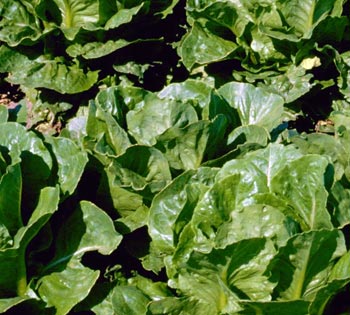Cut and come again vegetables
Use this harvesting technique to have a continuous supply of vegetables during your growing and eating season.
 You’ve heard the expression “everything old is new again.” This appears to be the case with new garden information that is appearing in some places. The term being used is “cut and come again vegetables.” However, these are not new, unheard of plants. It’s the same familiar vegetables with a new tagline.
You’ve heard the expression “everything old is new again.” This appears to be the case with new garden information that is appearing in some places. The term being used is “cut and come again vegetables.” However, these are not new, unheard of plants. It’s the same familiar vegetables with a new tagline.
Cut and come again vegetables involve growing vegetables that are just harvested in a different manner than some gardeners have been using. Vegetables that have leaves growing in a rosette form are the “come again” choices. A rosette simply means that the plant produces leaves in a circular form. New leaves come from the center and the older leaves are on the outside edges. Common vegetables like kale, collards, chard, leaf lettuce, Chinese cabbage and spinach grow as rosettes. Some that are not as common include mustard greens, cress, mizuna, endive, chervil, arugula and tatsoi.
The goal is to only harvest the oldest, outside leaves in the rosette. The center is the growing point and keeps making more leaves. This way, you have a continuous supply during your growing and eating season. You are not pulling out or cutting off the plant at ground level. However, this also involves caring for the plants by watering and fertilizing throughout the entire harvesting season. Hot weather may put an abrupt end to any cool season vegetables that cannot handle broiling temperatures. If you do not water well, the pruned vegetables may not live. All these vegetables are annuals so this is going to be a one season event.
There are other plants that can be grouped with the extended harvesting season theme. Broccoli is one. After cutting the main head off of broccoli, Michigan State University Extension advises gardeners to let the side shoots grow to form many small heads on all sides of the stem. These will never be as big as the main head was, but they taste just as good.
Fennel may have several small plants growing around its green, bulbous base where it comes out of the ground. Remove the big one and let the small ones grow larger.
Cut off green spring onions or scallions with a knife by slicing through the thin onion plant about an inch from the bottom and leaving the bottom and roots in the ground. If conditions are right, more little spring onions will come up and grow around the original cut plant.
Of the 50 or so vegetable plants grown in Michigan gardens, this just explains a different way of thinking about handling and harvesting vegetables. It is similar to planting a big row of beets and thinning them so the remaining beets can grow bigger. Instead of throwing away the thinned ones like some gardeners do, wash and cook them for greens and tiny beets. Oh, let’s call that “double-duty cuties” and make it new and fun, too.
Photo credit: Howard F. Schwartz, Colorado State University, Bugwood.org



 Print
Print Email
Email